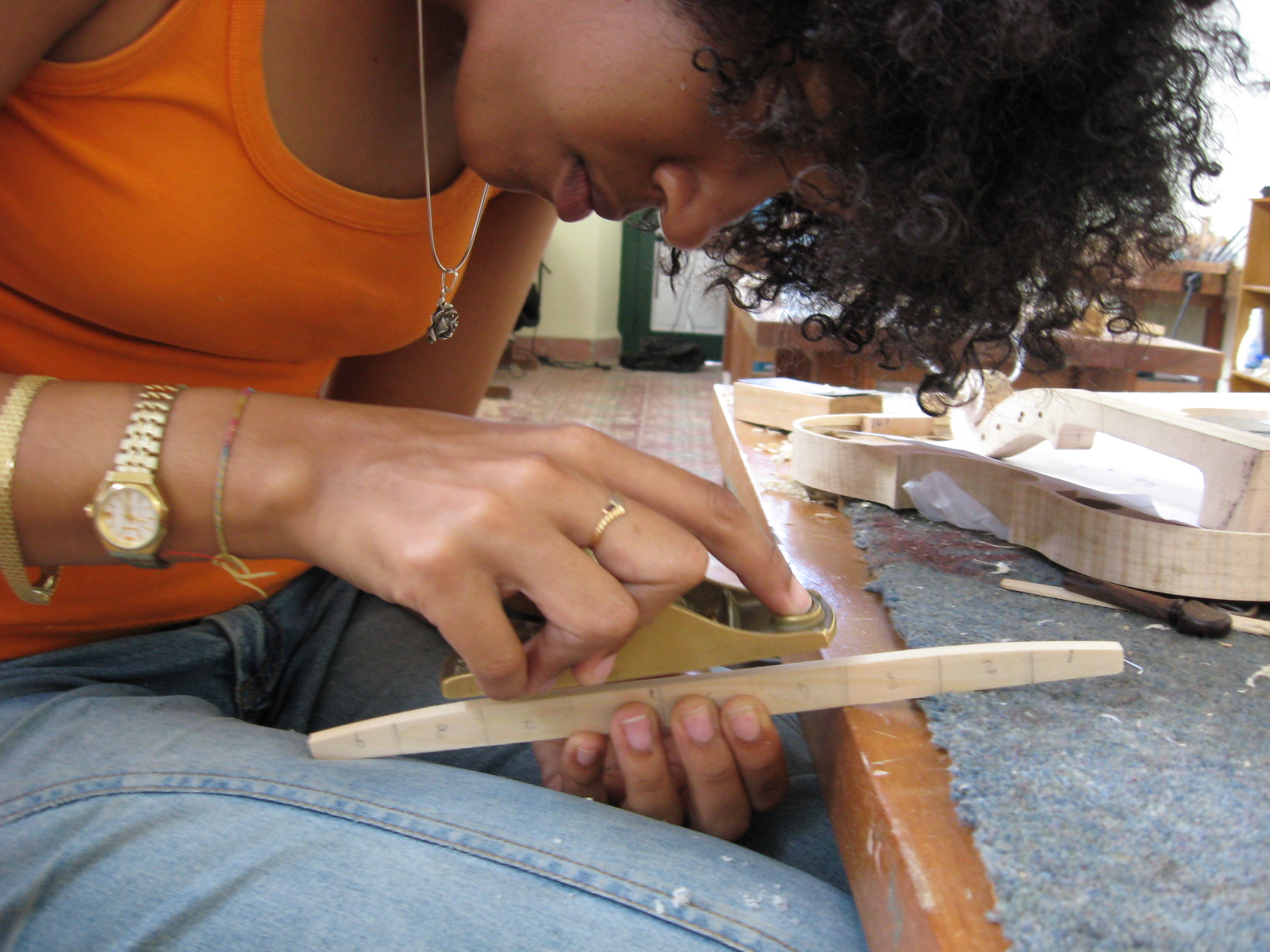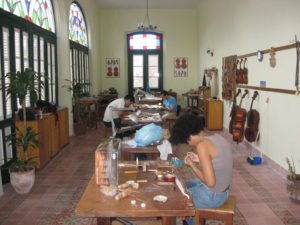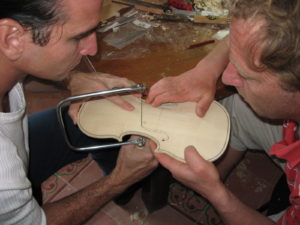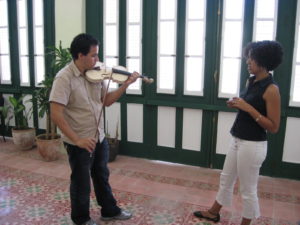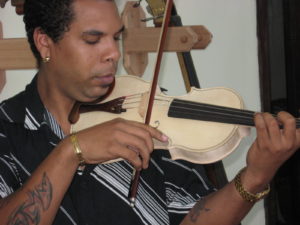I arrived the 14 April, late at night, with no visa and 40kg of tools and woods; after 1 hour of slightly worrying wait, my “visa volante” appeared and I was quickly let through immigration and customs. I was greeted by Andres and I was taken to the Casa Laical, my residence for the next month. The place turned out to be excellent for me; the room is comfortable and air conditioned, the food is nice and plentiful, the staff friendly and homely, the location is central and 5 min. walk to the workshop: I could not asked for more.
The next morning we started on, with Andres, 37, an experienced carpenter from the museums restoration, Winnie, 22, a violist with the Habana Symphony Orchestra, Felix, 26, a violinist with the “Soloists of Habana”, and Merlin, 25, a professional double bassist and teacher from Santiago. I was told I was going to be the first luthier to come and work in the new swanky facilities in Plaza Vieja. The location is terrific, on the first floor above the cerveceria in one of the main squares in Old Habana. The access is impressive with a large wooden spiral staircase, at the end of which you enter the workshop; it has a huge working room, and a further shaded very large “dining room”, which at the moment is used to store two computers and a big oval table, it will be a future office. There is a further kitchen, and a bathroom and store room on the second floor. This workshop offers the image and comfort that anyone could wish for. Not the same can be said for the benches, even being new are quite warped and with the end vices not working. The work, the lighting and the air conditioning would probably improve with some curtains to lessen the intense sun coming through the windows.
The tools stock is building up, however the oxidation is ferocious, blackening recently sharpened tools in days. For example, the scrapers left by other makers were pretty much thoroughly black, with little chance of being rescued. I suggested oiling all the tools that are not in daily use.
I brought materials for 4 complete instruments, 3 violins and 1 viola. My idea was to make one complete instrument first, and then progress on the others. However everyone wanted to start their own, fighting for the best materials.
After some discussions, Andres and I started on the “communal” violin, while Felix , Merlin and Winnie followed us with another 2 violins and a viola respectively. We worked from 8am to 5.30/6 pm, with roughly 1 hour interval for lunch. We managed to squeeze one Saturday in as well. The first week, we were joined by Peter Mach and Paul De Laat, from Canada. They were very helpful in some repairs, sharpening and making models. After 2 weeks Merlin had to leave us, due to teaching commitments in Santiago. We worked well, concentrating on the making, with very little repair work to distract us. The last week was probably the most rushed, with all the 3 of us working back onto the communal instrument; everyone was interested in taking part and following the most crucial finishing stages. With only hours to spare on my last day, we manage to string up the violin! Even if it had donated materials, with some big mistakes and with the hands of 4 people, it sounded remarkably good, enough to impress Felix and Winnie and other top class musicians from Ars Longa and some authorities that came for the occasion: after all it is the first violin (of a new generation) HECHO EN HABANA!
For more information about Luthiers Sans Frontières, visit their website.

